The term “jig” encompasses many different lures, here’s a look at three primary styles and how to put them to use on spring striped bass.
Experienced fishermen know that one of the most effective lures to catch migrating stripers in the spring is some sort of jig. A jig is the best artificial to get down deep where stripers lurk in the cold waters of the early season. However, the word “jig” can often mean different things to different fishermen. Are we talking a bucktail jig, a plastic lure threaded onto a jighead or jig lures in which the leadhead is encased in plastic?
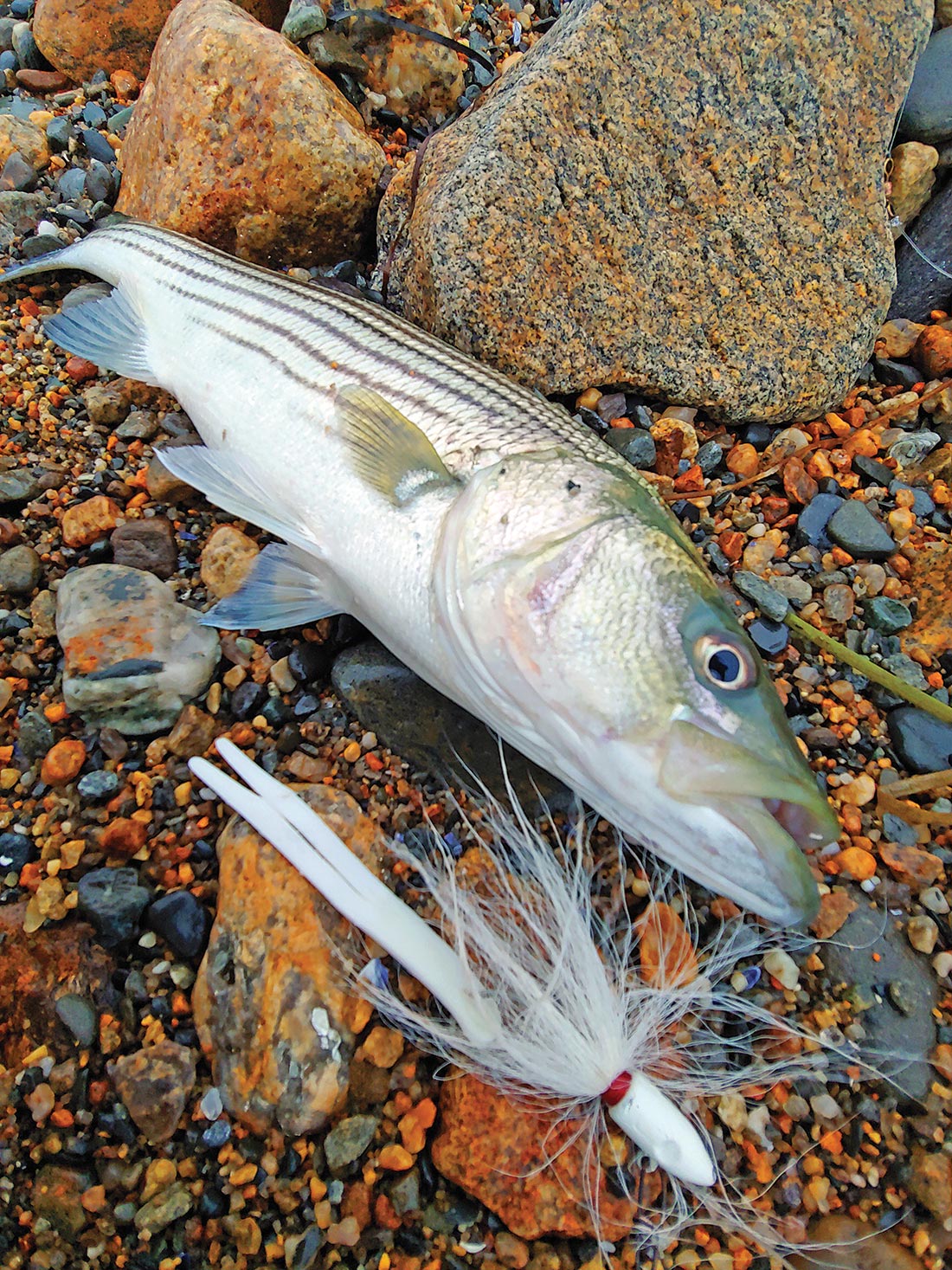
The spring plug bag is pretty simple and should have a “jig theme” to it and should be filled with a lot of jigs of various types. You should also have different sizes at the ready to address changing surf and ocean conditions. A good supply of jigheads and a variety of plastic bodies and tails of various sizes and colors to go with those jigheads rounds out the arsenal.
Bucktails
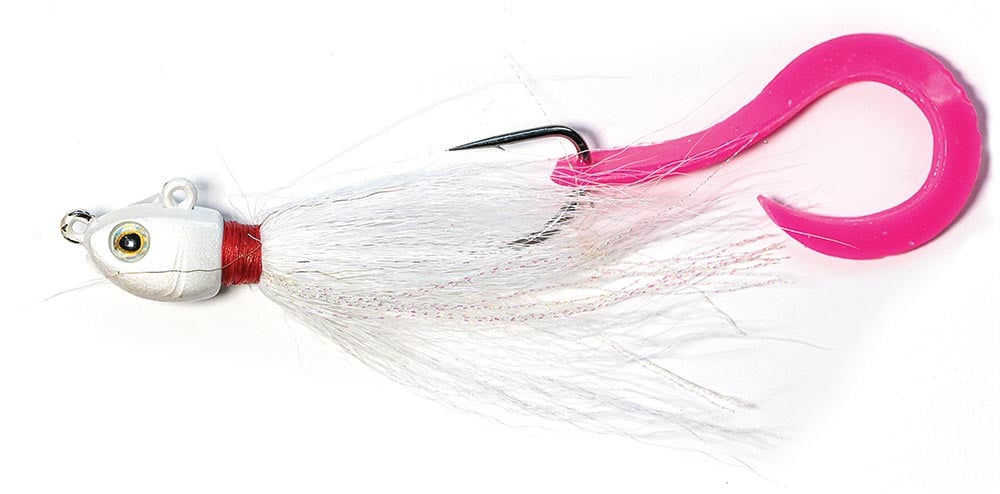
Bucktail jigs seem to be the forgotten lure for many fishermen these days outside Montauk. Many call them old fashioned, but they remain one of the most potent weapons to catch spring stripers. I make all my own bucktail jigs so stocking a lot of them and variety is quite easy. When I’m using small jigheads (under 1 ounce) I prefer the flathead or Upperman style in 3/8-, 1/2-, 5/8- and 3/4-ounce sizes. I tie them all the same with white hair and red thread. They work well with light tackle and are my go-to when fishing a jig off a float (more about this later). I always add a plastic curly tail to a bucktails, and my favorite is the Bass Pro Triple Ripple tail in white 3-inch tails work well with small bucktails (half ounce and under); use 4-inch tails with larger ones.
When it comes to bigger jigs, I prefer Spire Point jigs. They have a short, bullet-like shape head and track deep in rough water. They work great when the surf is up, the current is running and the wind is howling in 1- and 1-1/2-ounce sizes. In most cases you need a trailer like the Fat Cow jig strips, a plastic pork rind substitute. I find that larger bucktail jigs (over 1 ounce) sink and track along the bottom far better with a tail like this than the more buoyant plastic curly tails. In rough water along a beachfront, you want to cast these out, let them sink and then reel in slowly with an occasional pull of the rod tip.
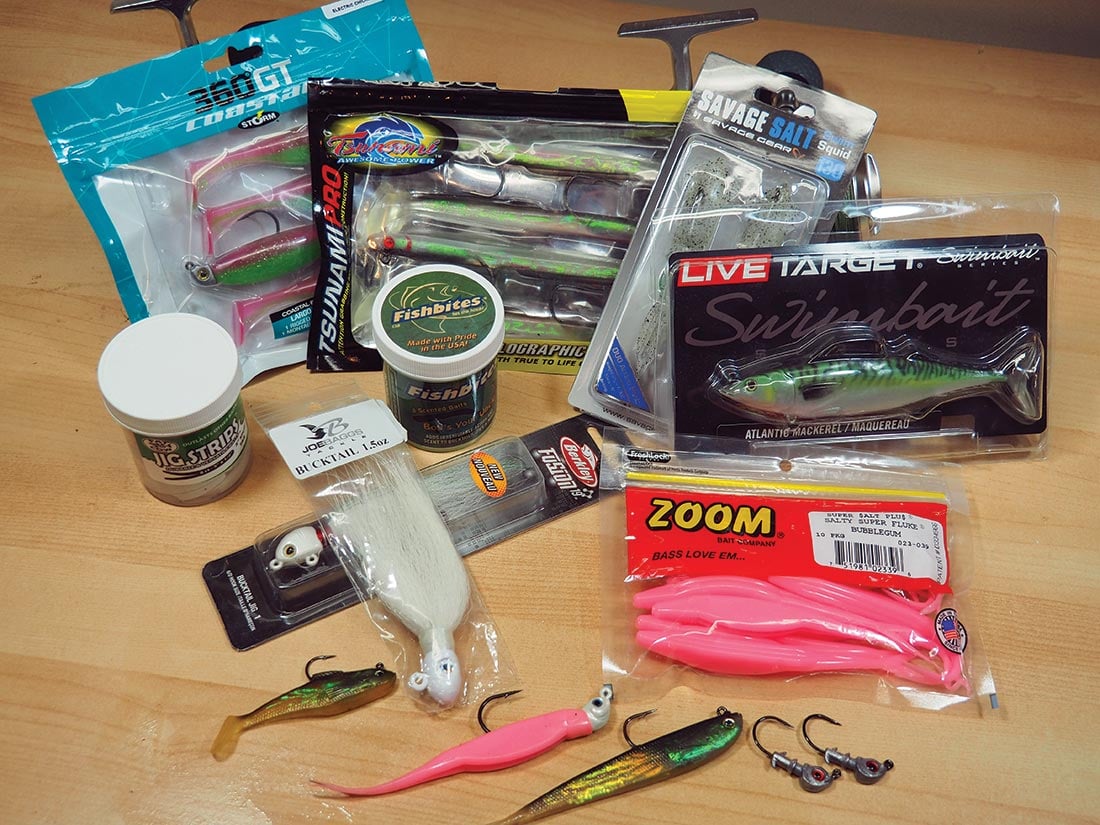
Soft Plastics & Jigheads
Generally more popular these days than a traditional bucktail jig is the use of soft plastics on jigheads. It’s convenient, it works, and sometimes it even out-fishes the bucktail jig. Due to this I carry a variety of jigheads from 3/8 to 1 ounce to use with plastic bodies. While I have no hard preference here on style of head, I tend to use “shad” jigheads of various sizes with a barbed collar.
Picking the right body for your jighead is often more important than head shape or style. Where I do most of my early-spring fishing, soft plastics with a fan tail or paddletail work the best with the 3- and 4-inch Cocahoe minnow in either solid white or glow being my favorite. They are very durable, have terrific action and they catch fish with astounding success. They are simple to use and can simply be cast and retrieved without any additional action, but some anglers prefer to impart some extra life by pulling the rod tip to give the lure a bounce on its swim to shore.
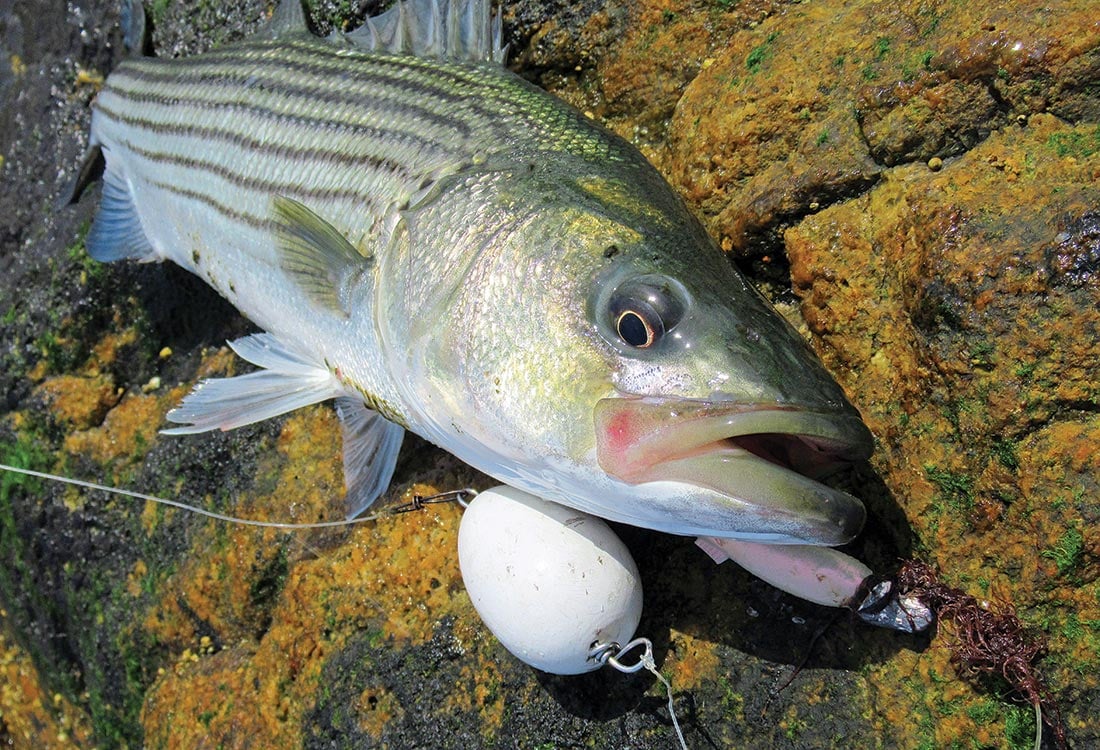
I have been trying some alternatives to the Cocahoe and put some time in with the Berkley Gulp Ripple Mullet last spring. The body was about 4 inches long in a white glow color with a chartreuse tail. It was super effective and landed a lot of fish for me, but is far less durable than the Cocahoe. That chartreuse tail on a white or glow body can be a killer when fishing around finicky fish. Sometimes that brightly-colored vibrating tail causes finicky fish to grab something that looks a bit different. Cocahoes are made with chartreuse tails though they are not easily found in tackle stores.
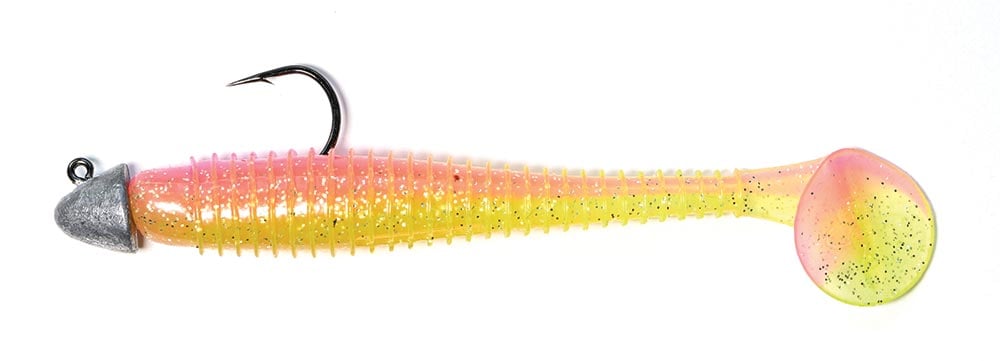 The other soft plastic body style that I carry that will thread onto a jighead are fork tailed lures. I like either the Zoom flukes or the Lunker City Fin-S fish, but many other companies make this style. I stock both the 4- and 5-inch flukes in my bag and generally prefer an albino color. For some reason I find that this style out-produces a paddle tail soft plastics in calmer water. Along the oceanfront I opt for a paddle tail, but in backwaters I lean on the fork-tails.
The other soft plastic body style that I carry that will thread onto a jighead are fork tailed lures. I like either the Zoom flukes or the Lunker City Fin-S fish, but many other companies make this style. I stock both the 4- and 5-inch flukes in my bag and generally prefer an albino color. For some reason I find that this style out-produces a paddle tail soft plastics in calmer water. Along the oceanfront I opt for a paddle tail, but in backwaters I lean on the fork-tails.
When fishing a fork tailed plastic lure on a jighead you want to work this similar to the bucktail jig and reel it in slowly with occasional pulls of the rod tip. Note that many times a fish will strike it as it is moving downward right after the pop or pull of the rod tip.
Swimbaits
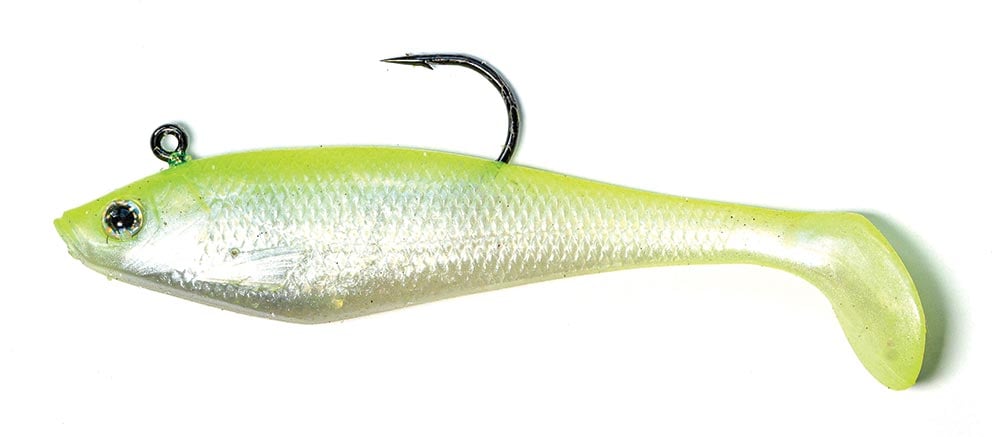 Last in my spring jig selection is the simple plastic paddle tail jig with the body molded around a lead jighead. Freshwater anglers have dubbed this style of jig a swimbait, and it encompasses many different shapes. The most famous among these lures on the saltwater side is the Storm WildEye Shad, but nowadays many companies produce a version of it including Tsunami, Savage Gear, Live Target and others. They come with lifelike holographic bodies that look and swim like the real thing, and there is no need to do anything but cast out and reel in. The drawback to these lures is that they are far more expensive than plastic bodies that mount onto jigheads.
Last in my spring jig selection is the simple plastic paddle tail jig with the body molded around a lead jighead. Freshwater anglers have dubbed this style of jig a swimbait, and it encompasses many different shapes. The most famous among these lures on the saltwater side is the Storm WildEye Shad, but nowadays many companies produce a version of it including Tsunami, Savage Gear, Live Target and others. They come with lifelike holographic bodies that look and swim like the real thing, and there is no need to do anything but cast out and reel in. The drawback to these lures is that they are far more expensive than plastic bodies that mount onto jigheads.
The final piece of this spring jig puzzle is how to deliver your offering. Most of the time I use a jig alone at the terminal end of my line. However, there are times when fishing shallow, rocky areas when this approach does not work. I carry some wooden egg floats in my bag for those spots. The wired wooden egg has 2 to 3 feet of mono coming off it onto which one of the small jigs discussed above is attached. It is cast out and simply reeled in as wave action gives the lure its life while the float keeps it moving above the snags. It is especially effective in shallow, rough water!
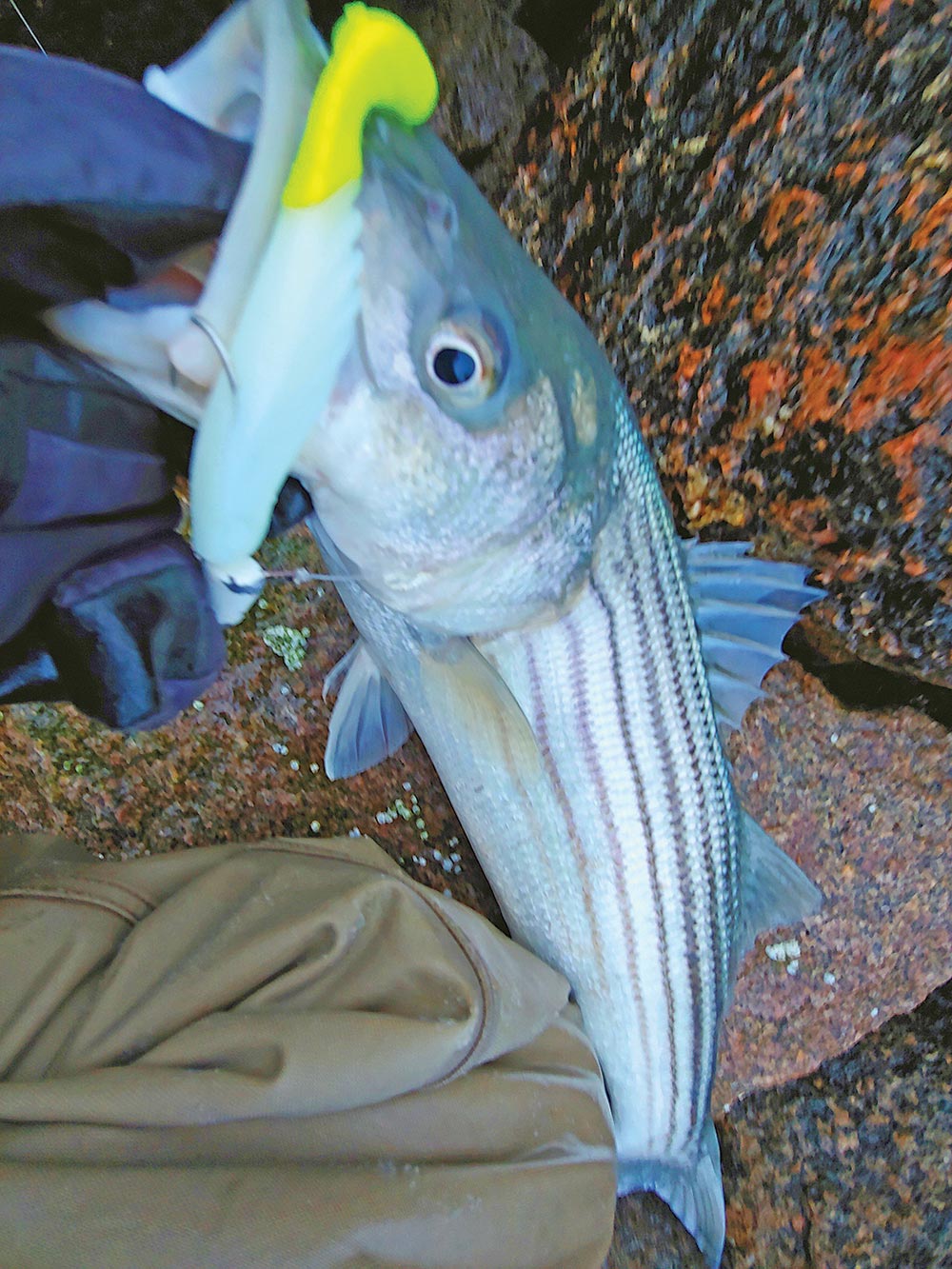
So, what’s the right jig to use in the spring? Like everything else in fishing, it depends on a number of factors. My suggestion is to stock a variety of jig types, sizes and bodies and experiment. If there’s one thing for sure, though, it’s that a jig is your most effective striper catcher for migrating stripers in the spring.



